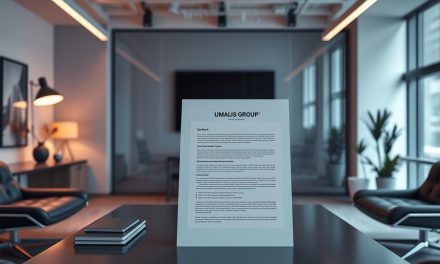Do you ever lie awake at night, replaying unfinished tasks in your mind while your phone buzzes with another late email? I’ve been there too. The line between work and life has blurred into invisibility for many of us, especially since remote roles became the norm. A recent Aviva study confirms what we’ve all felt: 41% of professionals now value harmony between career and personal time more than salary increases.
Technology promised flexibility but delivered endless connectivity. We answer Slack messages during family dinners. We draft proposals after bedtime stories. For independent professionals like you, this isn’t just inconvenient—it’s unsustainable. Your health and relationships deserve protection as much as your income does.
Our research shows three out of five Americans struggle to disconnect from job demands. Chronic stress from this imbalance doesn’t just drain joy—it risks serious conditions like heart disease. Yet hope isn’t lost. Flexible frameworks can reduce stress by nearly four times, proving that smarter systems beat sheer hustle.
Table of Contents
Key Takeaways
- 41% of workers prioritize personal time over higher pay post-pandemic
- Remote work complicates boundary-setting for 60% of professionals
- Chronic imbalance increases risks of cardiovascular issues
- Structured flexibility lowers stress levels by 3.8x
- Boundary strategies protect both career growth and relationships
Through this guide, you’ll discover how to safeguard your well-being without sacrificing professional momentum. We’ll help you build routines that honor your ambitions and your humanity—because true success includes thriving in every role you hold.
Understanding the Basics of Work-Life Balance
Achieving harmony between job demands and personal needs isn’t about equal hours—it’s about creating a rhythm that fuels both your career and relationships. Modern professionals often confuse this concept with rigid schedules, but true equilibrium requires flexibility and self-awareness.
Defining the Concept
Career-personal harmony varies dramatically between individuals. For some, it means leaving the office by 5 PM to coach little league. For others, it’s blocking Wednesday mornings for creative projects. The core principle remains constant: designing a system where neither work nor personal commitments consistently overshadow the other.
Key markers of success include maintaining energy for hobbies, sleeping 7+ hours nightly, and completing work tasks without weekend catch-ups. When your job enhances rather than drains your personal life—and vice versa—you’ve found your unique sweet spot.
Why Modern Professionals Need Equilibrium
Three trends make intentional balance non-negotiable:
- 72% of remote workers report difficulty “switching off” from job alerts
- Chronic stress from overwork costs U.S. businesses $300 billion annually
- Professionals with clear boundaries show 28% higher productivity rates
Your ability to compartmentalize directly impacts career longevity. Those who master this skill often report stronger client relationships and sharper focus during work hours—proof that protecting personal time isn’t selfish, but strategic.
Achieving Work-Life Balance
Your body sends signals when work demands too much. Morning fatigue despite full sleep? Irritability over minor issues? These subtle cues often precede larger health challenges. Recognizing them early helps prevent long-term damage to both your career and well-being.
Recognizing Signs of Imbalance
Persistent exhaustion and weekend recovery cycles reveal unsustainable patterns. Professionals frequently dismiss midday headaches or forgetfulness as temporary, but research shows these correlate with chronic stress. A University College London study tracking 10,000 workers found those exceeding required hours by three daily faced 60% higher cardiovascular risks.
- Consistent trouble focusing during meetings
- Frequent colds or prolonged recovery times
- Sleep disturbances despite physical tiredness
Impact on Mental and Physical Health
Prolonged strain doesn’t just cloud judgment—it rewires biological responses. Cortisol spikes from constant deadlines weaken immune defenses, while sustained blood pressure changes increase stroke likelihood. « The heart attacks we see in 40-year-olds often trace back to decade-long work stress cycles, » notes cardiologist Dr. Linda Harper.
« White-collar professionals working 11+ hour days face respiratory issues at triple the average rate. »
Mental clarity suffers equally. Anxiety about unfinished tasks erodes decision-making skills, creating a self-perpetuating cycle. Regular self-checks—monitoring appetite changes or emotional resilience—help catch issues before they escalate.
Balancing Work and Personal Life

Modern professionals often feel trapped between job demands and personal needs. Nearly 40% admit responding to work messages after hours due to perceived pressure, not preference. This creates a cycle where time meant for recharging becomes consumed by unfinished tasks.
Setting Clear Boundaries
Define your working hours like you’d schedule client meetings. Communicate availability windows through email signatures or collaboration tools. France’s « Right to disconnect » law demonstrates how systemic change protects personal space—adapt these principles individually.
Create physical separation tactics. Close your laptop at a set hour. Change outfits post-shift. These signals help your brain transition between roles. A 2023 survey found professionals using such techniques reduced after-hours emails by 62%.
Integrating Personal Time into Daily Routines
Treat leisure activities like critical appointments. Block calendar slots for exercise or family meals first. Those who prioritize personal life commitments report 34% higher job satisfaction.
Establish tech-free zones during meals or weekends. Use app blockers to limit work platform access. Remember: protecting your time isn’t selfish—it’s what sustains career longevity.
« Boundaries are the guardrails keeping your professional drive from crashing into personal well-being. »
Consistent boundary-setting strengthens client relationships by modeling reliability. When you honor your own limits, others learn to respect them too—creating balance that fuels success in all life areas.
Practical Strategies for a Fulfilling Career
Ever find yourself skipping lunch breaks to meet deadlines, only to feel drained by mid-afternoon? Strategic pauses fuel better performance than non-stop grinding. Research shows professionals who master intentional rest patterns achieve 23% higher output than chronic overworkers.
Implementing Effective Breaks and Time Off
Dr. Farvah Fatima’s studies reveal hourly 5-minute pauses boost productivity more than marathon sessions. Try these science-backed methods:
| Technique | Work Interval | Break Activity |
|---|---|---|
| Pomodoro | 25 minutes | Stretch or hydrate |
| 90-Minute Cycle | 80 minutes | 10-min walk outside |
| Energy Mapping | Varies | Meditation/breathing |
Schedule vacations like client contracts—67% who fully disconnect return with breakthrough ideas. Use auto-replies and task delegation systems from our strategies for maintaining equilibrium guide.
Utilizing Time Management Techniques
Align tasks with your biological clock. Morning person? Tackle complex projects before noon. Save admin work for energy dips. Three proven strategies:
- Time-blocking: Assign specific hours for email vs deep work
- Two-minute rule: Immediately complete quick tasks
- Friday planning: Map next week’s priorities every Friday 3 PM
« Micro-breaks recharge cognitive batteries better than caffeine, » notes Dr. Fatima. Track your energy levels for two weeks to identify natural rhythms—then build your schedule around them.
Remote Work and Sustainable Balance

Have you ever caught yourself checking Slack notifications during family movie night? Gallup reveals 85% of remote workers value flexible arrangements, yet only 33% consistently maintain healthy routines. This gap shows location freedom requires intentional structure to prevent work from consuming personal space.
Creating a Dedicated Workspace
Your brain needs clear signals to switch modes. Designate a specific home area—even a folding table—as your office. Professionals using consistent workspaces report 41% fewer after-hours email urges. Three essentials:
- Separate devices for job vs personal use
- Noise-canceling headphones for focused hours
- Visual cues like closed laptop lids post-shift
Establishing Daily Transition Rituals
Replace commutes with purposeful routines. A 10-minute walk mimics traveling « to work, » while changing outfits signals shift endings. Research shows these habits reduce late-night working by 62%.
Try these transition triggers:
- Morning: Brew tea while reviewing daily goals
- Evening: Power down devices during sunset stretches
« Rituals act as psychological bookends—they help contain job stress before it spills into family time. »
Need help maintaining boundaries? Explore our proven strategies for sustainable equilibrium. Remember: Successful remote balance demands regular adjustments as life changes—what worked during summer may falter when school meetings resume.
Mindfulness and Workplace Well-Being

Ever feel your shoulders tense as deadlines loom, yet you can’t pinpoint why? Mindfulness acts as your internal compass, helping detect subtle shifts in your mental health before stress escalates. This practice isn’t about emptying your mind—it’s about observing thoughts without judgment to regain control over reactions.
Practicing Mindfulness Techniques at Work
Start small. Before meetings, take three breaths using the 4-7-8 method: inhale for four counts, hold for seven, exhale for eight. This resets your nervous system in under a minute. Pair task transitions with body scans—notice where tension accumulates during spreadsheet work or client calls.
Try the “STOP” technique when overwhelmed:
- Stop what you’re doing
- Take five breaths
- Observe physical sensations
- Proceed with intention
These micro-practices build present-moment attention, helping you choose responses instead of defaulting to autopilot.
Managing Stress to Prevent Burnout
Mindfulness reveals early burnout signals: rushed lunches, skipped walks, or constant clock-watching. A 2023 Journal of Occupational Health study found workers using daily check-ins reduced burnout symptoms by 40%.
Build your defense system:
- Schedule two-minute breathing breaks every 90 minutes
- Practice mindful eating—notice textures and flavors during meals
- Use commute time for gratitude reflections
For deeper strategies, explore our guide to stress management techniques. Remember: Consistent practice strengthens mental resilience like exercise builds muscle—small efforts compound over time.
Leadership Approaches to a Healthy Work-Home Culture
True leadership shines when teams thrive both professionally and personally. Tower Perrin’s research reveals companies with engaged employees achieve 52% higher performance gaps in operating income compared to disengaged peers. This isn’t about perks—it’s about building culture where boundary-setting becomes collective strength.
Modeling Sustainable Practices
Leaders who silence notifications after hours create psychological safety. Temkin Group data shows engaged teams are 2.5x more likely to extend effort when needed—but only when trust flows both ways. Your actions set the tone: canceled weekend emails signal respect for personal recovery time.
Consider these impact points:
- Teams mirror leaders’ mental health priorities—84% report better focus when managers enforce reasonable limits
- Organizations promoting equilibrium retain talent 40% longer than rigid competitors
- Replacing burnt-out employees costs 1.5x their salary in recruitment and training
By treating personal time as non-negotiable, you foster engagement that drives results. The best leaders know protecting team well-being isn’t compassionate—it’s smart business.
FAQ
How do I know if my work-life integration needs improvement?
Watch for signs like chronic fatigue, reduced productivity, or strained personal relationships. Track your energy levels and emotional state after work hours using apps like Toggl or RescueTime. If tasks bleed into personal time consistently, it’s time to reassess boundaries.
What tools help maintain boundaries between remote work and home life?
Use physical cues like a dedicated workspace and digital tools like Google Calendar for time blocking. Apps like Slack allow scheduled “Do Not Disturb” modes. Employers like Buffer use tools like Focus@Will to signal focused work periods, reducing after-hours interruptions.
Can mindfulness practices truly reduce workplace stress?
Yes. Studies from Headspace for Work show employees practicing daily meditation report 32% lower stress levels. Simple techniques like box breathing or 5-minute guided sessions during breaks reset focus. Companies like Aetna have seen reduced healthcare costs after implementing mindfulness programs.
How can leaders promote a healthier work-home culture?
Model behaviors like unplugging after hours and respecting time-off policies. Salesforce uses “Wellbeing Fridays” where meetings are banned. Transparent communication about workload expectations and offering flexible schedules, as seen at HubSpot, fosters trust and reduces burnout risks.
What’s the most overlooked strategy for sustainable productivity?
Strategic breaks. Research by the Draugiem Group found 17-minute breaks every 52 minutes optimize output. Pair this with “micro-recovery” actions like stretching or hydration. Tools like Pomodoro timers enforce this rhythm, preventing decision fatigue.
How do time management techniques differ for freelancers vs. office workers?
Freelancers benefit from task batching and client communication buffers (e.g., Calendly limits). Office workers should negotiate core collaboration hours. Both groups need strict “shutdown rituals” – Zapier employees use end-of-day checklists to mentally transition from work mode.





